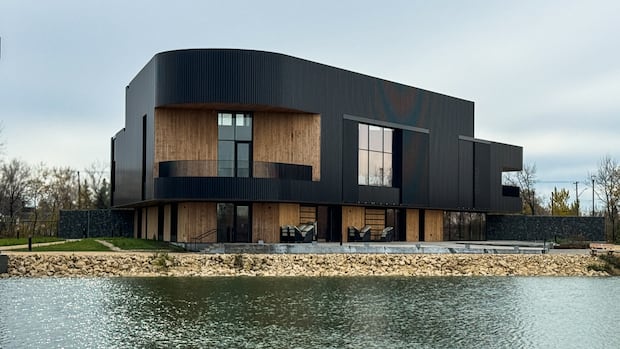ManitobaThe new visitor centre at Winnipeg’s Fort Whyte Alive has been recognized with a prestigious international award for its sustainable design and construction.Sustainability award recognizes spaces that ‘reflect the kind of future we want to live in’: Fort Whyte CEOCBC News · Posted: Oct 28, 2025 5:19 PM EDT | Last Updated: 6 hours agoListen to this articleEstimated 3 minutesFort Whyte Alive’s visitor centre was named one of the 20 winners of this year’s Holcim Foundation Awards for sustainable construction, which recognize sustainable design and construction across the globe. (Prabhjot Singh Lotey/CBC)The new visitor centre at Winnipeg’s Fort Whyte Alive has been recognized with a prestigious international award for its sustainable design and construction.Fort Whyte Alive’s Buffalo Crossing Paul Albrechtsen visitor centre, which officially opened in April of this year, was named one of 20 winners of this year’s Holcim Foundation Awards for sustainable construction. The awards recognize sustainable design and construction across the globe.Each of the 20 winners will receive $40,000 US. In each of the prize’s five global regions, one grand prize winner will also be selected and will get another $40,000. The regional grand prizes will be handed out in Venice on Nov. 20.Buffalo Crossing is among four winners in the North America region, and was selected out of 900 submissions, said Fort Whyte board president and CEO Liz Wilson.The awards celebrate more than architecture, recognizing spaces “that embody values [and] reflect the kind of future we want to live in,” Wilson said at a Tuesday news conference.”That’s why this award means so much to us — because Buffalo Crossing was always much more than just a building.”Each of the 20 winners were chosen because they use “the right materials in the right places, bring communities into the process from Day 1, and design with nature as an ally,” Holcim Foundation executive director Laura Viscovich said in a news release.According to Fort Whyte, the Buffalo Crossing facility is the province’s first commercial building certified to the passive house standard, meaning it was constructed using a set of international design principles and standards that allow up to 90 per cent less energy to be used for heating and cooling than conventional buildings. It’s also certified to the zero-carbon building standard.”That means dramatically lower energy use, reduced greenhouse gas emissions, a space that supports a more climate-resilient future, and it still feels warm, opening and inspiring,” said Wilson.Mike Moyes, Manitoba’s minister for environment and climate change, said Buffalo Crossing proves that low-carbon construction and architectural beauty “are not mutually exclusive.””It’s a living example of how sustainable living can meet the challenges of our time while honouring the land, our communities and being grounded in Indigenous knowledge,” he said at Tuesday’s news conference.
Wednesday, 17 Dec 2025
Canada – The Illusion
Search
Have an existing account?
Sign In
© 2022 Foxiz News Network. Ruby Design Company. All Rights Reserved.
You May also Like
- More News:
- history
- Standing Bear Network
- John Gonzalez
- ᐊᔭᐦᑊ ayahp — It happened
- Creation
- Beneath the Water
- Olympic gold medal
- Jim Thorpe
- type O blood
- the bringer of life
- Raven
- Wás’agi
- NoiseCat
- 'Sugarcane'
- The rivers still sing
- ᑲᓂᐸᐏᐟ ᒪᐢᑿ
- ᐅᑳᐤ okâw — We remember
- ᐊᓂᓈᐯᐃᐧᐣ aninâpêwin — Truth
- This is what it means to be human.
- Nokoma











